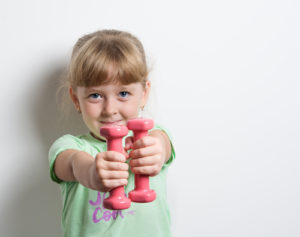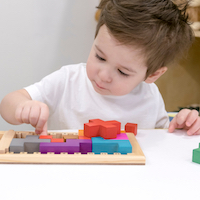“Distraction” gets a bad rap–but it can be a very useful stress reduction and emotional regulation skill.
A dictionary definition of “distraction” is “a thing that prevents someone from giving full attention to something else.” (From Oxford Language dictionary).
But what if that “something else” is a worrying or angry thought? Wouldn’t it be a positive skill to be able to distract from that?
Distraction from frustration or worrying thoughts can be a successful strategy to help us calm, center and manage our emotions and behavior. As long as the distraction techniques don’t get in the way of actually dealing with difficult situations, they can be beneficial to learn.
A recent study suggests that distraction as a skill is learned primarily by social observation.
This means that your children pick up this skill by watching what you and any siblings might do! Verbalizing your decision-making process is a great way to emphasize and teach.
The study used a typically frustrating situation that could trigger toddler meltdowns–waiting for something they really wanted.
The adults demonstrated how they used distraction during a waiting period, through their actions and words. It went something like this:
Something the adult wanted was put under a blanket. The adult repeatedly looked under the blanket with the toddler and mentioned how much they wanted the object. But the “rule” was that the adult had to wait until a light turned green before picking up the object. The adult then engaged in a distraction technique, (played with a toy, reading a story, etc.) while saying aloud that they really didn’t like waiting but that it was OK, and they could do the other activity while waiting.
The study found that distraction based on a child’s temperament is most effective at helping toddlers reduce anger and also increase compliance.
Toddlers who observed an adult demonstrating distraction, when given a similar task, chose a distraction strategy that matched their temperament. They were able to generalize to what worked for them. Active toddlers would be more likely to choose an active distraction technique rather than reading or doing a puzzle.
How could you model this at home?
For example, “I’m really worried about my meeting tomorrow. Would anyone like to take a walk around the block with me to help me take my mind off my worries?”
Or, “I am SO frustrated waiting for the repairman to arrive! I will jump on the trampoline–I don’t mind waiting when I do this!”
 So, if you have an active toddler, sitting and reading a quiet story may not be the best strategy to help them calm down when frustrated.
So, if you have an active toddler, sitting and reading a quiet story may not be the best strategy to help them calm down when frustrated.
According to the study, they might respond better to a more active distraction technique (like jumping on the trampoline, running a race, riding their bike). A child with a quieter temperament would respond better to a distraction technique that fits them–like reading a story cuddling, or coloring.
Having both types of distraction activities available for your child to choose from seems to be the best method since it allows them to match to their own temperament.
Study: Schoppmann, J., Schneider,S., & Seehagen, S. (2022). Can you teach me not to be angry? Relations between temperament and the emotion regulation strategy distraction in 2-year-olds. Child Development, 93, 165–179. https://doi.org/10.1111/cdev.13682

